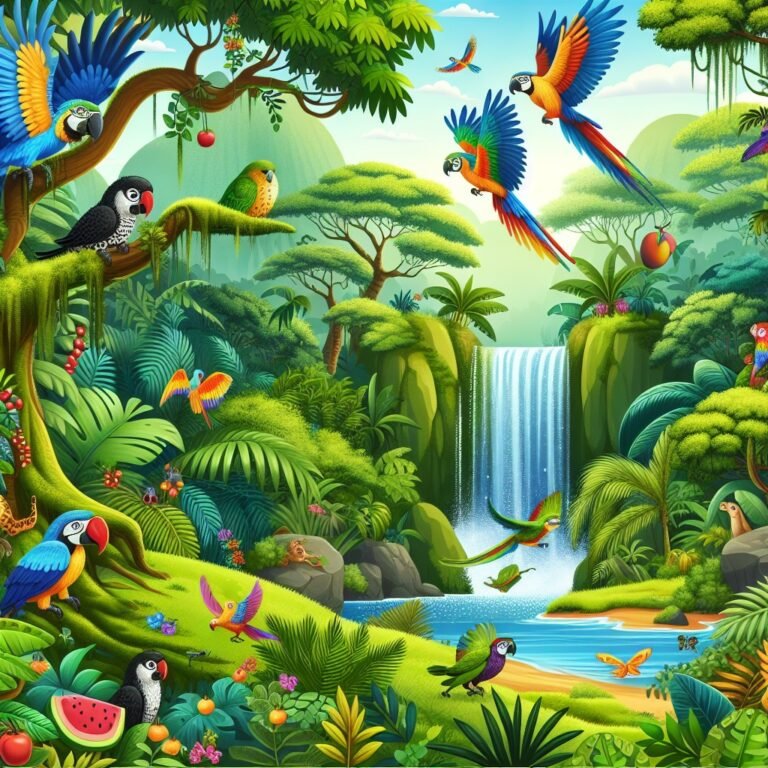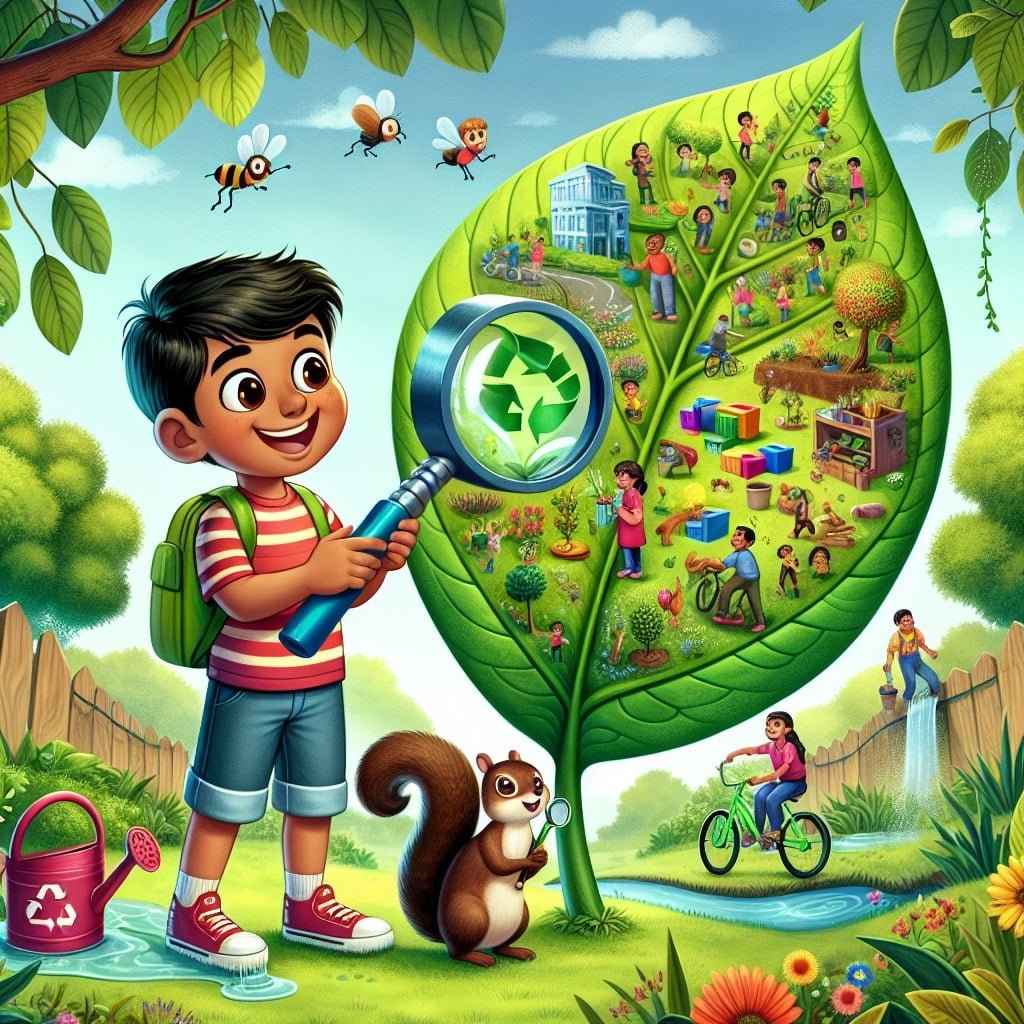Welcome to our blog post highlighting fascinating **Rainforest Facts For Kids**! In this collection of intriguing information, we will delve into the wonders of Earth’s oldest living ecosystems, the majestic Amazon Rainforest, the incredible biodiversity of rainforests, the medicinal properties of plants, the crucial role of rainforests in climate regulation, the bustling city-like canopy layer, the title of “the world’s pharmacy,” the alarming rate of deforestation, the vital production of oxygen, and the ancient knowledge of indigenous tribes. Whether you’re a young explorer looking to learn about the wonders of the rainforest or an older student seeking to understand the importance of preserving these vital ecosystems, there’s something here for everyone. Join us on this educational journey through the captivating world of rainforests!
Rainforest Facts For Kids
1. Rainforests are Earth’s oldest living ecosystems
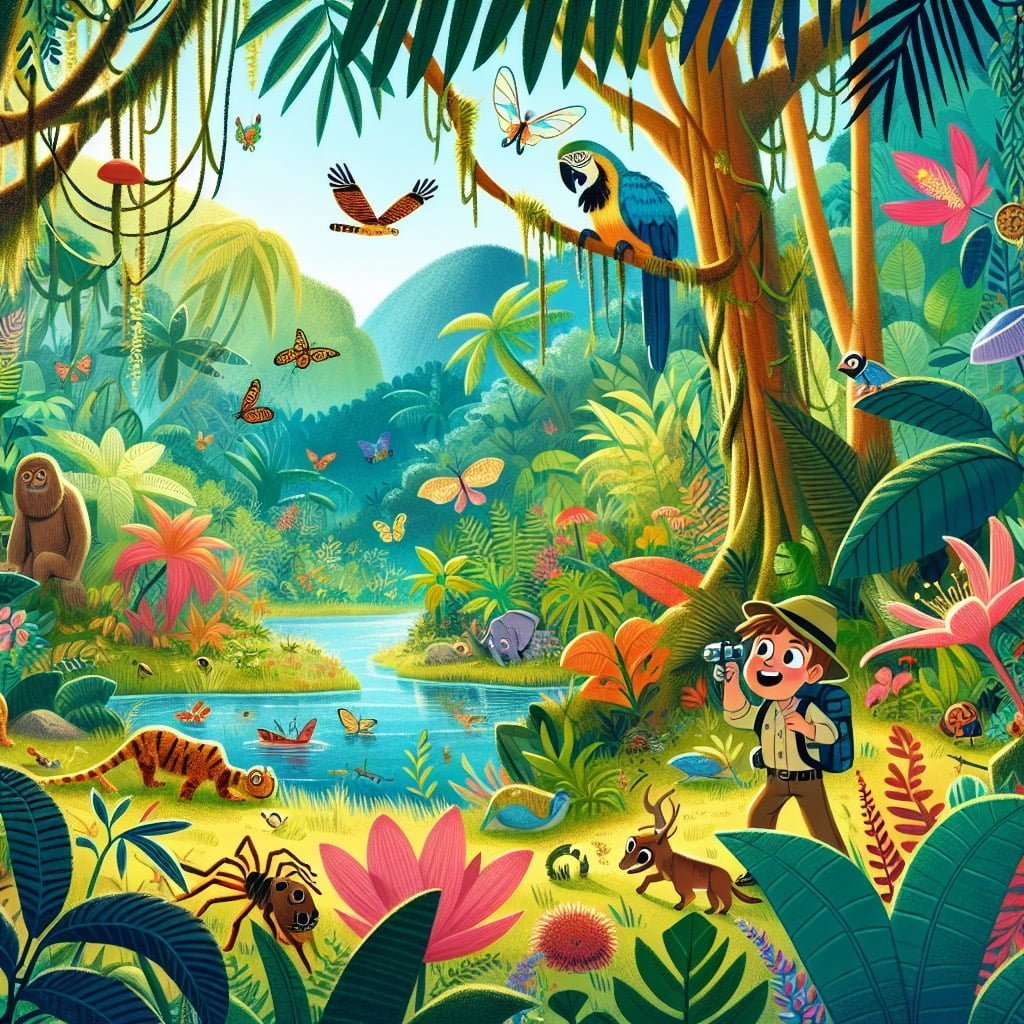
For younger kids: Rainforests have been around longer than dinosaurs!
For older kids: Rainforests are considered ancient as they have existed for over 50 million years, making them the oldest living ecosystems on Earth.
Detailed explanation:Rainforests are truly remarkable ecosystems that have been around for millions of years, making them Earth’s oldest living ecosystems. These lush and biodiverse regions play a crucial role in maintaining the balance of our planet’s climate and supporting a wide variety of plant and animal species.
One of the most fascinating facts about rainforests is their incredible biodiversity. It is estimated that rainforests are home to nearly half of all the world’s plant and animal species, despite covering only around 6% of the Earth’s land surface. This rich diversity is due to the ideal conditions found in rainforests, with abundant sunlight, warmth, and rainfall creating a perfect environment for a wide range of flora and fauna to thrive.
Another important aspect of rainforests is their role in regulating the Earth’s climate. The dense vegetation in rainforests acts as a carbon sink, absorbing carbon dioxide from the atmosphere and helping to mitigate the effects of climate change. In addition, the transpiration of water from the leaves of plants in the rainforest creates clouds and helps to regulate the local and global climate.
Educating children about rainforest facts is crucial in fostering a sense of appreciation and conservation for these valuable ecosystems. By teaching kids about the importance of rainforests, we can inspire the next generation to take action to protect these vital regions for future generations. It is essential that we all work together to preserve and protect rainforests for the benefit of the planet and all its inhabitants.
In conclusion, rainforests are not only Earth’s oldest living ecosystems but also play a vital role in supporting life on our planet. By raising awareness about rainforest facts for kids, we can help to ensure that these incredible ecosystems continue to thrive for years to come.
Rainforest Facts For Kids
2. Amazon Rainforest is the world’s largest tropical rainforest
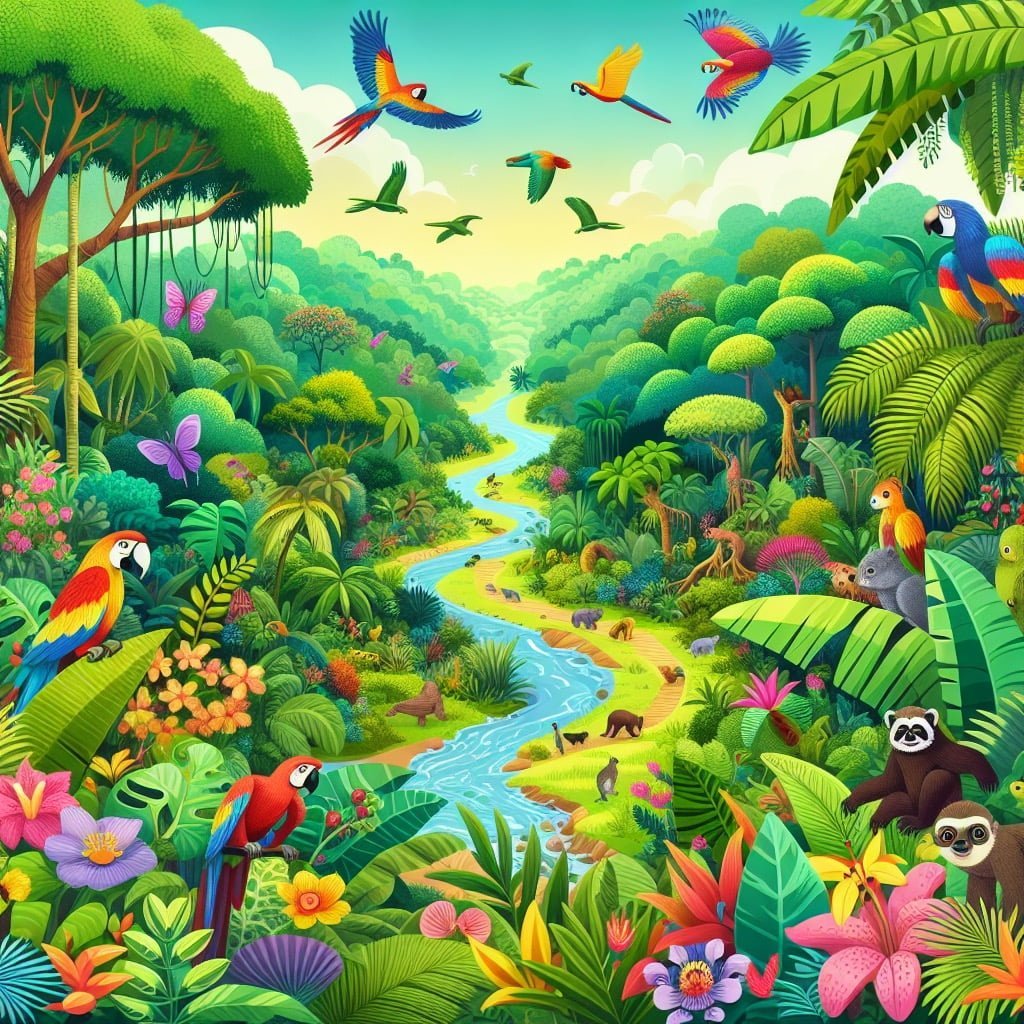
For younger kids: The Amazon is like a giant jungle playground!
For older kids: Covering over 2.1 million square miles, the Amazon Rainforest is the largest tropical rainforest globally, home to astounding biodiversity and indigenous tribes.
Detailed explanation:The Amazon Rainforest is not only the largest tropical rainforest in the world, but it is also one of the most biodiverse ecosystems on the planet. Spanning over 5.5 million square kilometers, the Amazon Rainforest is home to millions of plant and animal species, many of which are found nowhere else on Earth. This makes it a truly unique and vital habitat for a wide variety of flora and fauna.
One of the most fascinating Rainforest Facts For Kids about the Amazon Rainforest is its role in regulating the Earth’s climate. The vast expanse of trees in the rainforest act as a carbon sink, absorbing carbon dioxide from the atmosphere and helping to mitigate the effects of climate change. The Amazon Rainforest also plays a crucial role in producing oxygen, with each tree producing an estimated 260 pounds of oxygen per year.
In addition to its environmental importance, the Amazon Rainforest is also home to numerous indigenous communities that have lived in harmony with the land for generations. These communities rely on the rainforest for food, medicine, and shelter, making it an integral part of their cultural identity.
However, despite its critical importance, the Amazon Rainforest is facing severe threats from deforestation, mining, and agriculture. It is estimated that an area the size of a football field is lost every second in the Amazon Rainforest due to human activities. This destruction not only threatens the biodiversity of the rainforest but also has global implications for climate change.
In conclusion, the Amazon Rainforest is a remarkable and essential ecosystem that provides a home to countless species, regulates the Earth’s climate, and supports indigenous communities. It is a precious resource that must be protected for future generations to enjoy and benefit from.
Rainforest Facts For Kids
3. Rainforests are home to half of Earth’s plant and animal species

For younger kids: There are so many animals and plants to discover in the rainforest!
For older kids: Rainforests support an incredible array of life, housing around 50% of the world’s plant and animal species within their diverse habitats.
Detailed explanation:Rainforest Facts For Kids: One of the most fascinating aspects of rainforests is their incredible biodiversity. It is estimated that rainforests are home to half of Earth’s plant and animal species, making them one of the most diverse ecosystems on the planet.
The sheer variety of species found in rainforests is truly astonishing. From colorful birds to elusive mammals, from towering trees to tiny insects, rainforests are teeming with life at every level of the food chain. This diversity is crucial for the health of the ecosystem, as each species plays a unique role in maintaining the balance of the environment.
One of the reasons why rainforests are able to support such a wide array of plant and animal species is their lush and fertile environment. With abundant rainfall, warm temperatures, and nutrient-rich soil, rainforests provide the perfect conditions for a multitude of species to thrive. In addition, the complex structure of the rainforest canopy creates multiple niches for different species to inhabit, further adding to the overall biodiversity of the ecosystem.
It is important for kids to understand the importance of rainforests and the need to protect these valuable habitats. By learning about rainforest facts for kids, children can develop a greater appreciation for the beauty and complexity of these ecosystems. Through education and awareness, we can work towards ensuring that rainforests continue to be havens for a vast array of plant and animal species for generations to come.
Rainforest Facts For Kids
4. Some rainforest plants can cure diseases
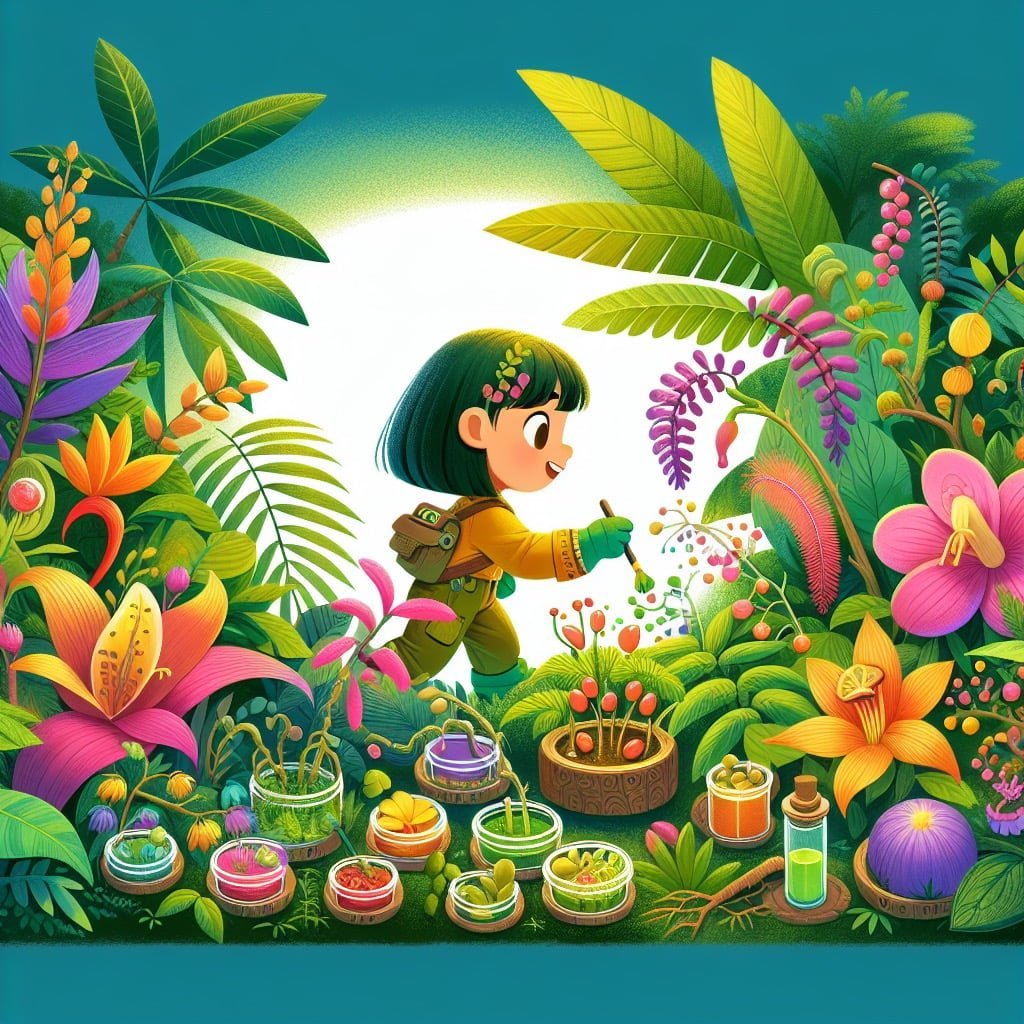
For younger kids: Rainforest plants can help people feel better!
For older kids: Many plants in the rainforest have medicinal properties, with scientists discovering valuable drugs like quinine for treating malaria sourced from rainforest flora.
Detailed explanation:Rainforests are incredibly biodiverse ecosystems, home to a wide variety of plant species that have been used for centuries by indigenous peoples for their medicinal properties. In fact, some rainforest plants have been found to contain compounds that have the potential to cure diseases and illnesses in humans.
One example of a rainforest plant with powerful medicinal properties is the rosy periwinkle, a plant native to Madagascar. The rosy periwinkle produces compounds that have been used to create drugs to treat childhood leukemia and Hodgkin’s disease. These drugs have been instrumental in increasing the survival rates of patients with these types of cancer, highlighting the importance of preserving rainforest habitats for their potential medical benefits.
Another example is the Amazon rainforest, which is known for its vast array of plant species with medicinal properties. The bark of the cinchona tree, for example, contains quinine, a compound used to treat malaria. Additionally, the Amazon rainforest is home to plants like the cat’s claw vine, which has been used in traditional medicine to treat arthritis and inflammation.
By exploring and studying the plant life in rainforests, scientists have been able to uncover potential cures and treatments for various diseases. The rich biodiversity of rainforests provides a valuable resource for medical research and could hold the key to developing new and innovative drugs. Therefore, it is crucial to protect these habitats to ensure that future generations can benefit from the medicinal properties of rainforest plants. In conclusion, rainforest facts for kids should include information about the remarkable potential of these ecosystems to provide cures for diseases.
Rainforest Facts For Kids
5. Rainforests regulate Earth’s climate

For younger kids: Rainforests help keep the planet cool!
For older kids: Rainforests play a crucial role in climate regulation by absorbing carbon dioxide and releasing oxygen, helping to stabilize global temperatures.
Detailed explanation:Rainforests play a crucial role in regulating Earth’s climate, making them essential to the health of our planet. One of the key ways in which rainforests help regulate the climate is through the process of transpiration. Transpiration is the release of water vapor from plants into the atmosphere. In the rainforest, the dense vegetation results in high rates of transpiration, which contributes to the formation of clouds and ultimately to rainfall. This process helps to maintain the water cycle, which is vital for weather patterns and climate stability.
Furthermore, rainforests act as carbon sinks, absorbing carbon dioxide from the atmosphere and storing it in plant biomass and soil. This helps to mitigate the effects of climate change by reducing the amount of greenhouse gases in the atmosphere. Deforestation, on the other hand, releases large amounts of carbon dioxide into the atmosphere, contributing to global warming.
In addition to their role in regulating the climate, rainforests also help to maintain biodiversity. They are home to a vast array of plant and animal species, many of which are found nowhere else on Earth. This biodiversity is important for ecosystem resilience and the adaptation of species to changing environmental conditions.
Overall, rainforests are a critical component of the Earth’s climate system. Protecting and preserving these vital ecosystems is essential for maintaining a stable climate and a healthy planet for future generations. So, it is important to educate kids about Rainforest Facts For Kids in order to raise awareness about the importance of rainforests and inspire action to protect them.
Rainforest Facts For Kids
6. The canopy layer in rainforests is like a bustling city
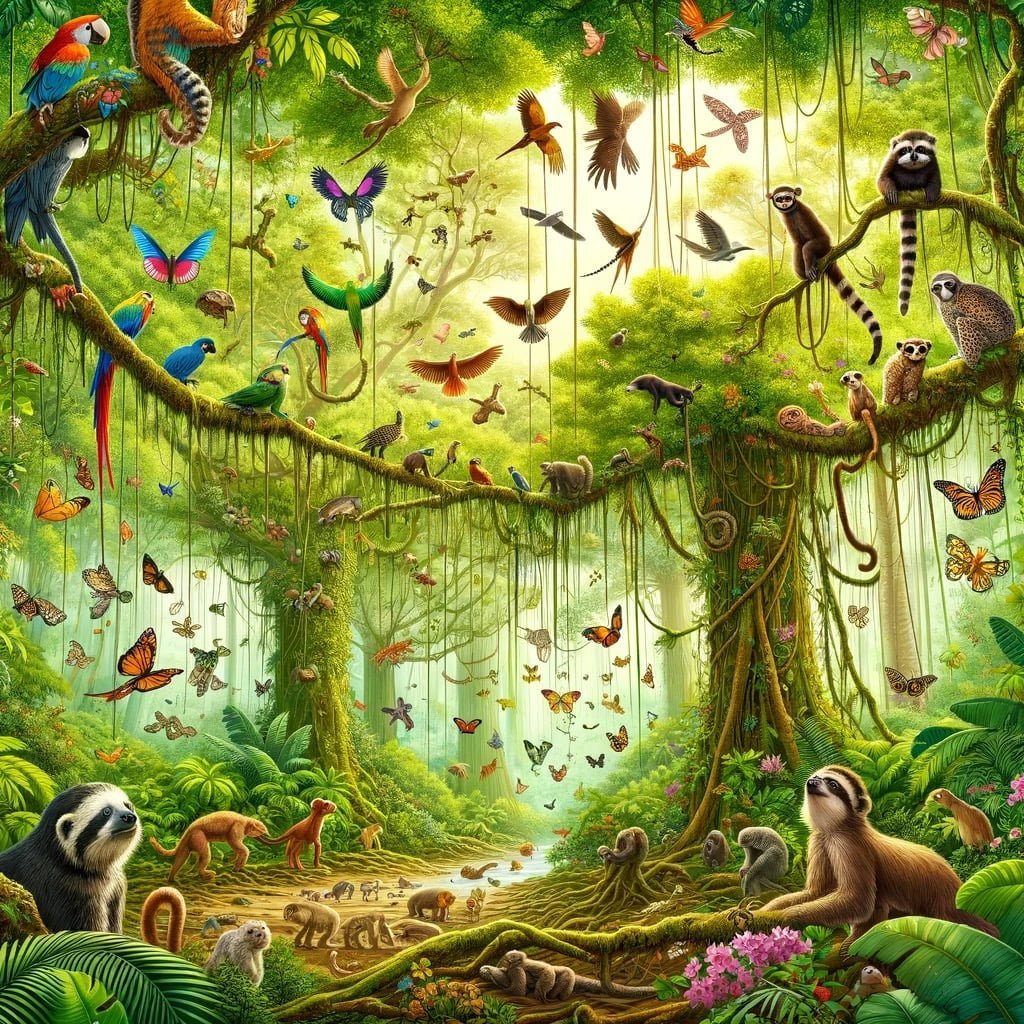
For younger kids: The treetops are a busy city for animals in the rainforest!
For older kids: The canopy layer of rainforests is teeming with life, serving as a habitat for numerous species like monkeys, birds, and insects that never touch the forest floor.
Detailed explanation:The canopy layer in rainforests, as described in rainforest facts for kids, can be compared to a bustling city for several reasons. This layer, which is made up of the upper branches and leaves of trees, is teeming with life and activity much like a bustling city. Just as a city is filled with buildings, roads, and people going about their daily lives, the canopy layer is filled with trees, vines, and a diverse array of animals going about their daily activities.
One of the main reasons why the canopy layer is compared to a bustling city is the sheer amount of biodiversity found there. This layer is home to a wide variety of plant and animal species, all interacting with each other in a complex web of relationships. From brightly colored birds to elusive primates, the canopy is alive with movement and sound. In this way, it can be likened to a city bustling with activity and diversity.
Another reason why the canopy layer is comparable to a bustling city is the vertical nature of its structure. Just as skyscrapers in a city provide habitat for people and businesses at different levels, the trees in the canopy layer provide habitat for different species at different heights. Animals like monkeys and sloths swing from branch to branch, while birds flit from tree to tree, creating a dynamic and interconnected ecosystem within the canopy.
Overall, the comparison of the canopy layer in rainforests to a bustling city helps to illustrate the richness and complexity of this unique ecosystem. By thinking of the rainforest in this way, we can better understand and appreciate the intricate relationships and interactions that make it such a vital and fascinating environment.
Rainforest Facts For Kids
7. Rainforests are called “the world’s pharmacy”
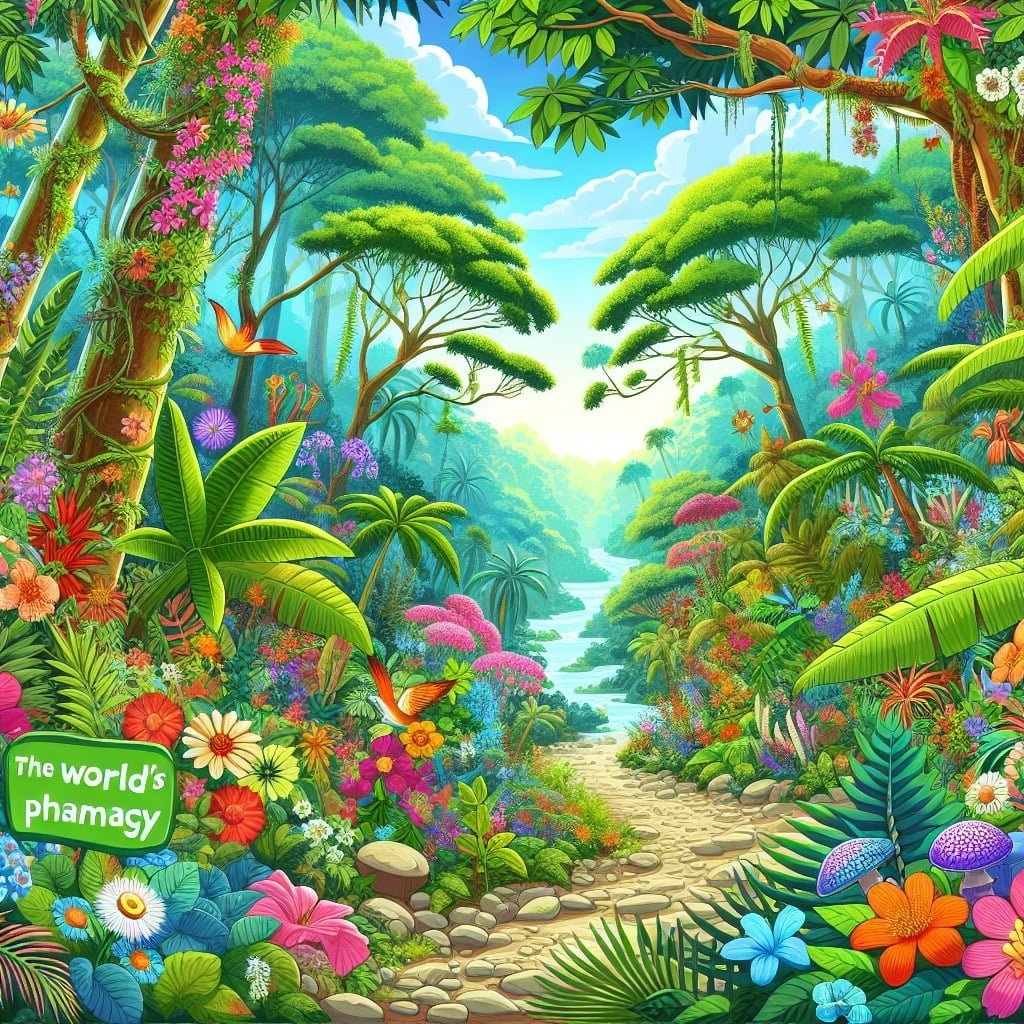
For younger kids: Rainforests are like a huge store of useful things for people!
For older kids: Due to the many medicinal plants found in rainforests, they are often referred to as “the world’s pharmacy” for their potential in producing life-saving drugs.
Detailed explanation:Rainforests are known as “the world’s pharmacy” because of the incredible biodiversity of plant and animal species that call these ecosystems home. It is estimated that rainforests cover only about 6% of the Earth’s surface, yet they are home to more than half of the world’s plant and animal species. This immense diversity provides a vast array of natural resources that have been used for centuries by indigenous peoples for medicinal purposes.
In fact, many of the drugs that we use today have their origins in the rainforest. For example, the rosy periwinkle plant, found in the rainforests of Madagascar, is the original source of drugs used to treat childhood leukemia and Hodgkin’s disease. Another well-known example is the bark of the Cinchona tree, which is used to produce quinine, a drug used to treat malaria.
The vast potential for new medicines and treatments that could be derived from the rainforest is still largely untapped. Scientists estimate that we have only explored a fraction of the plant and animal species in the rainforest, and many potential life-saving drugs could be waiting to be discovered.
Protecting rainforests is not only crucial for preserving biodiversity, but also for potentially unlocking new medical breakthroughs. By recognizing the importance of rainforests as a valuable resource for medicine, we can better understand the vital role these ecosystems play in sustaining life on Earth. It is essential that we continue to study, protect, and conserve rainforests for future generations to benefit from their abundance of natural treasures.
Rainforest Facts For Kids
8. Rainforests are disappearing at an alarming rate

For younger kids: People are working to save the rainforest from disappearing!
For older kids: Deforestation poses a significant threat to rainforests, with large areas being cleared for agriculture, logging, and urban development, leading to habitat loss and biodiversity decline.
Detailed explanation:Rainforests are incredibly diverse and important ecosystems that are home to a vast array of plant and animal species. Unfortunately, these vital habitats are currently facing a crisis as they are disappearing at an alarming rate. The destruction of rainforests is primarily due to human activities such as deforestation, agriculture, logging, and mining.
One of the main reasons for the rapid disappearance of rainforests is deforestation. Large areas of rainforest are cleared to make way for agricultural activities such as palm oil plantations and cattle ranching. This not only leads to the loss of habitat for countless species but also contributes to climate change as trees are no longer able to absorb carbon dioxide from the atmosphere.
Logging is another major driver of rainforest destruction. Trees are cut down for timber, paper products, and other materials, leading to widespread habitat loss and disruption of the delicate balance of ecosystems. Mining activities also contribute to the destruction of rainforests as they require clearing large areas of land for operations.
The disappearance of rainforests has serious implications for both the environment and society. It leads to loss of biodiversity, extinction of species, disruption of ecosystems, and contributes to climate change. Furthermore, many indigenous communities rely on rainforests for their livelihoods and cultural practices, and the destruction of these ecosystems threatens their way of life.
In order to address the alarming rate at which rainforests are disappearing, it is crucial for individuals, governments, and organizations to take action to protect and conserve these important ecosystems. This can be done through supporting sustainable agriculture practices, promoting reforestation efforts, advocating for stricter regulations on logging and mining activities, and supporting conservation initiatives. By raising awareness about the importance of rainforests and taking concrete actions to protect them, we can help ensure that these valuable ecosystems continue to thrive for future generations of both humans and wildlife.
Rainforest Facts For Kids
9. Rainforests produce a fifth of the world’s oxygen

For younger kids: Rainforests help us breathe by making lots of fresh air!
For older kids: Despite covering only 6% of the Earth’s land surface, rainforests are responsible for generating approximately 20% of the world’s oxygen supply through photosynthesis.
Detailed explanation:Rainforests are incredibly important ecosystems that play a vital role in maintaining the health of our planet. One of the most fascinating Rainforest Facts For Kids is that these lush habitats produce a fifth of the world’s oxygen. This may come as a surprise to many people, as the common misconception is that the majority of Earth’s oxygen comes from the ocean. However, it is actually the trees and plants of the rainforest that are responsible for such a significant portion of the oxygen we breathe.
The process by which rainforests produce oxygen is through a natural phenomenon known as photosynthesis. During photosynthesis, plants take in carbon dioxide from the air and water from the soil, using sunlight to convert these elements into glucose and oxygen. The glucose is then used as energy for the plant, while the oxygen is released back into the atmosphere for other organisms, including humans, to breathe.
By producing a fifth of the world’s oxygen, rainforests are essentially the lungs of our planet, playing a crucial role in maintaining the balance of gases in the atmosphere. Without these oxygen-producing ecosystems, the levels of carbon dioxide in the air would rise, leading to serious consequences for the climate and the health of all living beings on Earth.
It is imperative that we recognize the importance of preserving rainforests and taking action to protect them from deforestation and other human activities that threaten their existence. By educating children about Rainforest Facts For Kids, we can instill a sense of appreciation and stewardship for these vital ecosystems, ensuring that future generations will continue to benefit from the oxygen they provide.
Rainforest Facts For Kids
10. Rainforest tribes rely on ancient knowledge for survival

For younger kids: Some people live in the rainforest and know many secrets of the jungle!
For older kids: Indigenous tribes living in rainforests hold valuable knowledge of medicinal plants, sustainable practices, and ecological balance, contributing to the preservation of these vital ecosystems.
Detailed explanation:Rainforest Facts For Kids: One fascinating aspect of rainforests is the presence of indigenous tribes who have lived in these lush environments for generations. These rainforest tribes have developed a deep understanding of their surroundings and have accumulated a wealth of ancient knowledge that is crucial for their survival.
One of the key reasons why rainforest tribes rely on ancient knowledge is due to the unique biodiversity and complex ecosystems found within these environments. The rainforest is home to an incredible variety of plant and animal species, many of which have unique properties that can be used for medicinal purposes, food, and even shelter. Over centuries, these tribes have learned how to identify and utilize these resources effectively, passing down this knowledge from generation to generation.
Additionally, the rainforest tribes have also developed sustainable practices that allow them to live in harmony with nature. They understand the delicate balance of the ecosystem and how their actions can impact the environment around them. By following traditional practices such as shifting cultivation and selective harvesting, they are able to ensure the long-term health of the rainforest and continue to thrive in their natural surroundings.
It is important to note that the ancient knowledge of rainforest tribes is not only valuable for their own survival, but also holds key insights for modern society. Scientists and researchers are increasingly turning to indigenous knowledge for solutions to challenges such as climate change and biodiversity loss. By respecting and learning from these ancient practices, we can gain a deeper understanding of the intricate workings of the rainforest and work towards preserving these invaluable ecosystems for generations to come. In conclusion, the reliance of rainforest tribes on ancient knowledge is a testament to the profound connection between humans and the natural world.
Did you know?
Did you know that rainforests are so loud that it can be difficult to hear someone talking just a few feet away?
Summary of Rainforest Facts For Kids
Discover the fascinating world of rainforests with these ten intriguing facts perfect for kids of all ages. From being Earth’s oldest living ecosystems to housing half of the world’s plant and animal species, rainforests are not just lush jungles but diverse and essential components of our planet. Learn how some rainforest plants hold the key to curing diseases and how these majestic forests play a critical role in regulating Earth’s climate. Explore the bustling canopy layer, often likened to a busy city, and understand why rainforests are often called “the world’s pharmacy.” However, with alarming rates of deforestation threatening these vital ecosystems, it’s crucial to understand and appreciate the significance of rainforests. Delve deeper into the secrets of ancient rainforest tribes and their sustainable practices, highlighting the urgent need for conservation efforts. Rainforest facts are not only educational but also serve as a reminder of the incredible diversity and importance of these ecosystems. So, let’s dive into the rich world of rainforests and discover why they are worth safeguarding for future generations.
Sources and additional information for Rainforest Facts For Kids
WikipediaBritannicaEnvironmental Protection Agency (EPA)National Oceanic and Atmospheric Administration (NOAA)The Nature ConservancyWorld Wildlife FundEarth Day NetworkGreenpeace InternationalJane Goodall InstituteEnvironmental Protection Agency (EPA)World Wildlife Fund – ConservationNature ConservancyGreenpeaceUnited Nations Environment Programme (UNEP)Conservation InternationalEarthwatch InstituteEnvironmental Defense FundSierra Club
